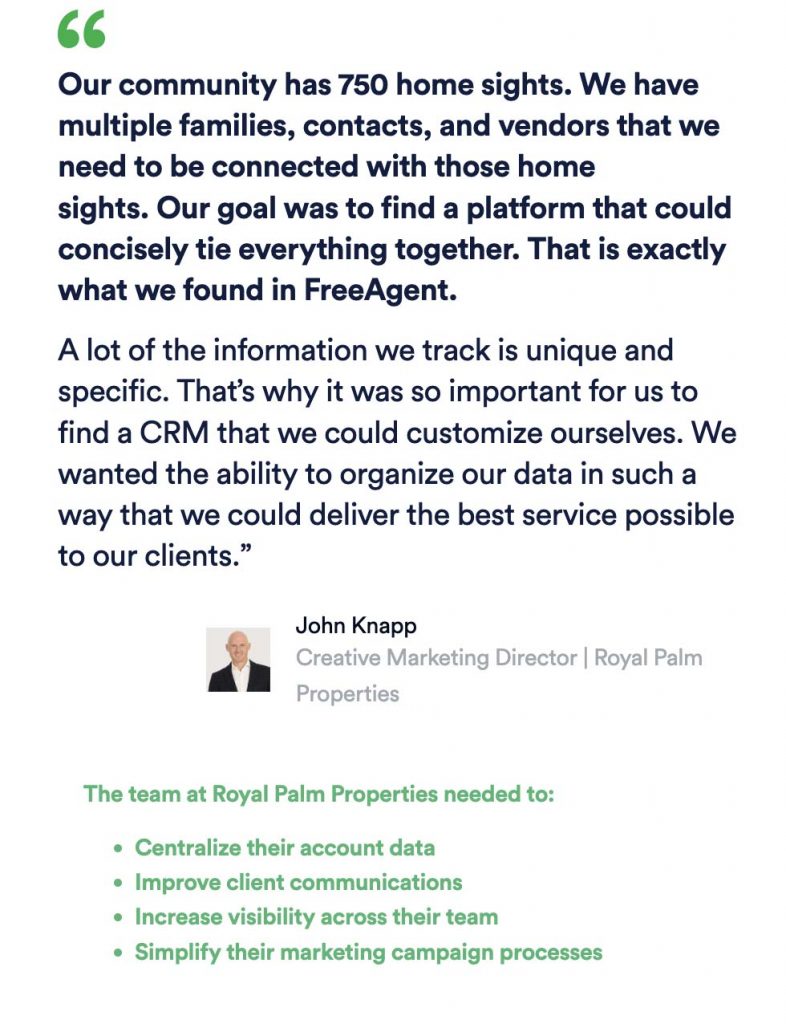TL;DR: The PASTOR method offers a step-by-step approach to defining problems, solutions, and results, turning customer success stories into powerful marketing tools.
Work with us to craft your own B2B case studies today.
Think having a B2B case study don’t matter? Think again.
In the B2B marketing world, case studies are more than just a marketing tool.
They’re a lifeline to closing deals and building trust, especially when running account based marketing plays or looking to improve sales team performance.
A case study provides social proof that you’ve helped others solve the exact problem your prospect is facing.
Case study statistics: What the numbers say
Ignoring case studies is like leaving money on the table.
Per the Demand Gen Report, 62% of B2B buyers find case studies helpful in providing insights into how the solution will work for them and their needs.
Here’s a reality check:
- 73% of the most successful content marketing professionals use case studies to drive business results.
- 36% of marketers cite case studies as effective — more than any blog post, podcast, or infographic — according to the Content Marketing Institute.
- A whopping 97% of buyers place a heavy emphasis on trust when deciding whether to do business with you.
In short, an effective B2B case study can drive serious revenue for your B2B business.
As a B2B marketer, you probably already know you need to craft B2B case studies to support your digital marketing.
However, you may be stuck on exactly how to write one.
That’s where the PASTOR method comes in.
What is the PASTOR method of writing B2B case studies?
PASTOR stands for:
- Problem: What were you facing?
- Approach: What did you consider?
- Solution: What did you execute?
- Team: Who did you work with?
- OKRs: How were you measured?
- Results: What did you achieve?
Just as real-life pastors convert non-believers into believers, the PASTOR case study writing method converts skeptics into long-term believers.
Let’s dig into each element of the PASTOR method and how it can support your B2B marketing efforts.
We’ll explore a few effective case study examples to show how to craft a success story.
Problem
Every business case study starts with a problem or challenge.
A company might be trying to increase traffic, grow on social media, run paid ads, or track brand mentions.
Something was preventing them from reaching their goals — such as resources, time, or a lack of expertise — so they reached out to you.
In your marketing case study, outline the problem you had to solve — ideally one a prospective client would be looking to solve.
Example:
“Small business X was struggling to increase its online presence. They had a great product but lacked the know-how to market it effectively online.
Their website was outdated and their social media channels inactive. They reached out to our B2B marketing agency to help them overcome these challenges.”
What works best:
Clear define the problem in simple terms. Use language that both technical and non-technical readers can understand.
In the above example, the problem is the lack of online presence due to an outdated website and inactive social media channels.
What to avoid:
- Using jargon or complex language: Keep the description of the problem clear and simple.
- Being vague or general: Specificity helps the reader understand exactly what the challenge was.
- Ignoring the client’s perspective: Their insights can add depth and make the problem more relatable.
- Overcomplicating the problem: While details are essential, unnecessary complexity can confuse the reader.
- Failing to link to the solution: Don’t describe a problem that doesn’t clearly align with the solution that follows.
- Omitting the impact of the problem: If the problem had significant consequences or created urgent needs, they can add urgency and context to why the problem needed solving.

Approach
The approach is the plan or strategy you used to tackle the problem.
This is where you outline the steps you took to understand the problem and solve it.
Example:
“We conducted a thorough analysis of the small business’s online presence.
We reviewed the website, analyzed social media channels, and interviewed the business owner to understand their goals and target audience.
Based on this information, we developed a comprehensive online marketing strategy.”
What works best:
Detail the approach step-by-step to help the reader follow along.
In the above example, the marketing agency‘s approach included analysis, review, interviews, and strategy development.
What to avoid:
- Skipping important steps: Don’t leave out critical steps or details that were part of the approach. Readers need a complete understanding of the process.
- Ignoring client collaboration: Don’t neglect to mention how the client was involved in the approach if applicable. Their input and collaboration might have been essential.
- Failing to explain choices: Discuss what you considered and why. The reasoning behind your approach adds context and understanding.
- Omitting challenges or setbacks: If there were challenges or setbacks in formulating the approach, these can provide insights into the complexity of the problem and the thought process involved.
Solution
The solution is the actual implementation of the approach. It’s where you describe what you did to solve the problem.
Example:
“We redesigned the business’s website, created engaging content for social media, and launched targeted online advertising campaigns.
We also provided training to the business owner on how to maintain the new online presence.”
What works best:
Provide specific details about the solution, including what was done and why it was done that way.
In the above example, the solution involved redesigning, creating content, advertising, and training.
What to avoid:
- Being too technical: Keep the explanation of the solution accessible to a broad audience, unless you absolutely have to get technical.
- Glossing over details: Readers need to understand the specific actions taken to solve the problem.
- Ignoring challenges: If there were obstacles or challenges faced during the implementation of the solution, they can provide valuable insights and make the case study more relatable.
- Overpromising results: Keep the description of the solution honest and realistic.
- Lack of visuals: If applicable, avoid missing out on including visuals like charts, graphs, or images that can illustrate the solution more vividly.
- Ignoring the client’s perspective: Don’t neglect to include the client’s feedback or perspective on the solution. Their insights can add depth and credibility.
- Failing to link to approach: The solution should be a logical continuation of the approach, and any deviation should be explained.
Team
The team section is where you introduce the people who worked on the project.
This helps humanize the case study and shows who was responsible for its success.
Example:
“Our team consisted of a project manager, web designer, content writer, and social media specialist.
We also hired out a contractor to assist with paid ads. Each member had a specific role and contributed to the project’s success.”
What works best:
Including the names, roles, and brief descriptions of team members.
In the above example, the team’s composition and individual responsibilities are clearly outlined.
What to avoid:
- Leaving out key team members: Include everyone who played a significant role.
- Being too vague about roles: Specificity helps the reader understand who did what.
- Ignoring collaboration: Mention how the team worked together, with contractors, or with the client.
- Overemphasis on credentials: While qualifications or credentials can be helpful, the focus should be on each member’s roles and contributions.
- Lack of personal touch: A brief insight into team dynamics or individual personalities — or even adding a few photos — can humanize the case study.
OKRs
OKRs (Objectives and Key Results) are the goals and measurable outcomes of the project.
This section outlines what you aimed to achieve and how you measured success.
Example:
“The objective was to increase the small business’s online presence by 50% within six months.
Key goals included a 30% increase in website traffic, 40% increase in social media engagement, and 20% increase in online sales.”
What works best:
Clearly define the objectives and key results, using quantifiable metrics.
In the above example, the OKRs are specific and measurable.
What to avoid:
- Outlining vague or unmeasurable goals: Objectives and key results should be clear, specific, and quantifiable.
- Ignoring alignment with the problem and solution: The OKRs should ideally align with the problem identified and the solution implemented.
- Overcomplicating the OKRs: Simplicity and clarity are key to understanding what you aimed to achieve.

Results
The results section is where you showcase the outcomes of the project. It’s the proof that your solution worked.
Example:
“The small business saw a 55% increase in online presence, exceeding the initial objective. Website traffic increased by 35%, social media engagement by 45%, and online sales by 25%.”
What works best:
Providing specific, quantifiable results that align with the OKRs. In the above example, the results are clearly tied to the objectives and key results set earlier.
What to avoid:
- Ignoring negative or unexpected outcomes: Less than ideal results can provide valuable insights and add credibility.
- Lack of evidence or data to support results: You need evidence, data, or examples to substantiate the case study’s claims.
- Overemphasis on success without learning: Don’t focus solely on the successes without mentioning what was learned or how the experience might inform future projects.
- Ignoring client feedback on results: Including the client’s perspective or a customer quote can add depth to the case study.
Factors that can influence your case study writing process
Case studies are invaluable tools in showcasing the effectiveness of a product or service.
But the outcome of a case study is influenced by various factors, such as:
- Client participation: The willingness of a client to share their experiences and learning curve plays a crucial role. A hesitant client may not provide all the needed details, making the case study less impactful.
- Rapport: Establishing a strong rapport between you/the interviewer and the client is essential. A good relationship can help in extracting valuable insights that make the case study more relatable and authentic.
- Gap-filling: The case study writer must bridge the gap between the client’s version of events and the actual outcome. This requires skill to ensure no crucial details are omitted or exaggerated.
- Deadlines: There might be a need for a quick turnaround, especially if the case study is tied to a product launch, website revamp, or marketing campaign. Managing this from a project perspective can be challenging.
Strategies to mitigate these factors:
To ensure these challenges don’t compromise the quality of your case study, consider the following tips:
- Preparation: Send out interview questions beforehand and request written responses before the interview. This often results in more articulate and detailed answers, providing richer content for the case study. This exercise is useful even if the client can’t respond in writing.
- Product feedback: Pushing too hard for positive feedback can lead to generic or disengaged responses. Conversely, allowing the client to focus solely on product critique might not yield useful marketing content. To navigate this, ask clients to outline any product concerns before the interview.
- Collaboration: If the roles of the interviewer and writer are separate, have both present during the client call. However, the ideal scenario is to have a single case study writer skilled in both interviewing and writing. AI note-takers can also help in capturing the conversation accurately.
- Research: Engage with the Customer Success team to gather the latest results or KPIs related to the client. This not only shows preparedness but also allows the interviewer to delve deeper into qualitative aspects, making the case study more unique.
- Deadlines: Understand the timeline for the case study, especially if it’s tied to specific events like a product launch. Aligning timelines ensures everyone’s on the same page, leading to a smoother process and a more polished product.
A few more tips on crafting a great B2B marketing case study
Here are a few more tips to help you showcase ideal customer success:
- Choose a compelling B2B case study title: The headline is 80% of the click, so pick something that’ll grab attention. Putting stats in your case study headline seems to work well.
- Sort your case studies by category: If you have lots of case studies, sort and label them into different categories, such as strategy, copywriting, design, paid media, and community management.
- Show, don’t tell: Add pictures of your creative assets and screenshots of the data or feedback you collected. This drives the point home for a potential customer.
- Add durations: Indicate the length of each campaign or client engagement for reference
- Add links: Where possible, link to the campaign posts for reference (especially if crafting case studies for your website).
Using AI in case study writing
AI is a tool that’s beginning to shape how we create customer stories.
Some organizations are using AI to organize call notes, improve transcripts, and even draft content.
Tools like SummarAIze, Descript, and ChatGPT can transform interview transcripts into written studies.
It’s like having an assistant who can do the initial groundwork for you.
What about security and privacy? These are big concerns.
You must ensure sensitive data is safe and that your content doesn’t end up in the wrong hands.
Companies are working on this by testing with non-sensitive content and scrutinizing the privacy policies of the tools they use.
And the human touch is still irreplaceable.
AI can handle the menial tasks, but crafting a compelling story is something only you and I, as human writers, can do.
The genuine human element in storytelling is something that AI hasn’t mastered yet.
AI is speeding up everything from capturing to delivering stories.
But the quality still comes down to the voice of the customer, and we’ll always need human oversight.
Get help writing case studies
Crafting a compelling case study is more than just presenting facts and figures.
A great B2B case study is about telling a customer story that resonates with your buyer persona.
The PASTOR method provides a structured approach to showcase not only the challenges and solutions but the human element behind a successful project.
From defining the problem to celebrating the results, each step is a vital piece of a narrative that can turn a potential client into a long-term believer.
If you’re looking to create a customer case study that truly converts, and need guidance in making it impactful, reach out for expert help with your B2B case study writing today.
Mo is the founder and CEO of Column, helping leaders shape public opinion through content and research. Connect with him on LinkedIn.





